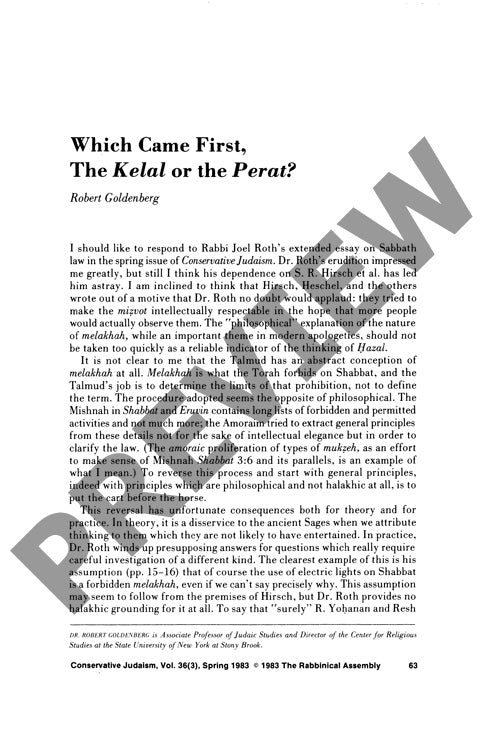Which Came First the Kelal or the Perat
Couldn't load pickup availability
Rabbi Joel Roth's influential approach to Sabbath law interpretation fundamentally misreads ancient rabbinic reasoning by imposing modern philosophical frameworks onto Talmudic thought. Drawing on textual analysis, Goldenberg reveals how Roth's reliance on modern Jewish thinkers like S.R. Hirsch and Abraham Joshua Heschel leads him astray from authentic rabbinic methodology. The Talmud itself contains no abstract conception of melakhah (forbidden work), instead defining it functionally as those activities specifically prohibited by Torah on Sabbath. Where the Amoraim extracted general principles from specific Mishnaic details for legal clarification, modern scholars have reversed this process - starting with philosophical principles rather than halakhic particulars - in their effort to make mitzvot intellectually respectable. This methodological inversion carries serious theoretical and practical consequences for contemporary halakhic questions, such as the permissibility of electric lights on Sabbath. Resolving such modern challenges requires careful analysis of halakhic precedents and analogies rather than predetermined philosophical assumptions, preserving the integrity of traditional rabbinic interpretive methodology.

More Information
-
Physical Description
-
Publication Information
Published 1983
ISBN
-
Publication Credits
Robert Goldenberg

